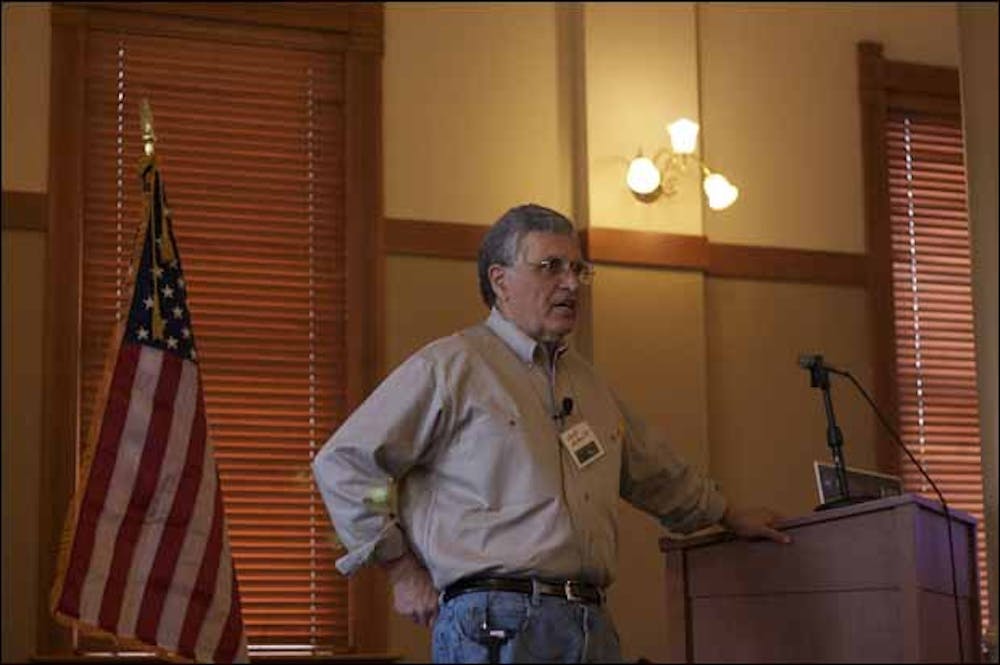ASU hosted one of the first specific workshops on ground-based geophysics of the moon on the Tempe campus Thursday and Friday.
The event focused on the discussion of the physical state and knowledge of the moon, as well as future plans to visit the moon.
“One of the primary goals for the workshop was to provide an interface between the planetary and the terrestrial geophysical communities,” said Matthew Fouch, an associate professor at the School of Earth and Space Exploration and one of the event’s coordinators.
Fouch said to his knowledge this is the first attempt to really get these two types of scientists to collaborate like they did more than 40 years ago in the Apollo lunar mission days.
They have been separated more recently because of the difference in focus, though studying the planets and the moon can be interrelated with studying the Earth.
Harrison “Jack” Schmitt, a former NASA astronaut, and Drew Feustel, a current NASA astronaut, were among the many scientists, researchers, professors and students at the event.
The workshop had about 60 registered attendees but sometimes there were as many as 40 extra people present, who signed up last minute, Fouch said.
The two-day workshop opened with Schmitt’s keynote address on ground-based geophysics on the moon and active seismology. He is known for being one of the last men to walk on the moon as an astronaut and geologist with the Apollo 17 mission.
“Having this kind of interaction in the geophysics community about the kinds of things that we ought to do when we return to the moon is extremely important,” Schmitt said. “The earlier the better, because then you can start to zero in on what’s really important scientifically.”
Scientists are trying to understand more about the origin and evolution of the moon and there is more to learn, even after Apollo 17, Schmitt said.
“The moon is our library … for understanding the early history of the Earth,” Schmitt said.
Feustel, known for his work as an astronaut and fixing the Hubble Space Telescope, helped present during the workshop. Also a geophysicist, Feustel plans to return to space in July for the STS-134 space shuttle mission.
“I don’t know if I’ll be young enough to go to the moon when we go back to the moon, but I’d certainly like to,” he said.
Zyad Kadri, an Earth and space exploration junior, said the workshop’s subject matter interested him because his former classmates made a poster on seismometers on the lunar surface.
A lot of the scientists seemed interested in the moon’s history and its role in the secrets of the Earth, he said.
Though he only attended a portion of the event, Kadri said he expected more.
“It seemed like the ideas were still kind of in genesis,” Kadri said. “I was disappointed. I was hoping that maybe I’d learn that something was actually in the works.”
Seismologist Edward Garnero, a geology professor at the School of Earth and Space Exploration, attended the workshop because his research group is interested in studying the moon.
“I’ve always loved the moon and been curious about it,” Garnero said.
Though he was intrigued by Schmitt’s remarks, Garnero said he is interested in staying on Earth for now and finds it exciting that there are still mysteries on the moon.
“I’ve seen these moon movies where they interview the astronauts, but having that guy up there just walk around in his frank, friendly approachable style, I thought for the first time …‘Wow!’” Garnero said. “These are Earth scientists who got to go have a party on the moon and pick up rocks and do things that are really fun.”
Reach the reporter at reweaver@asu.edu




